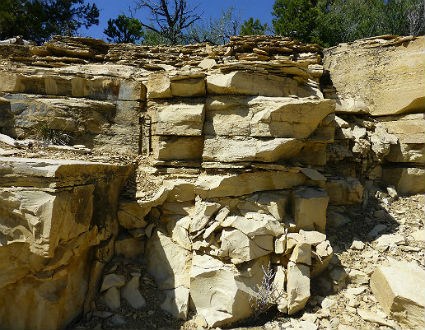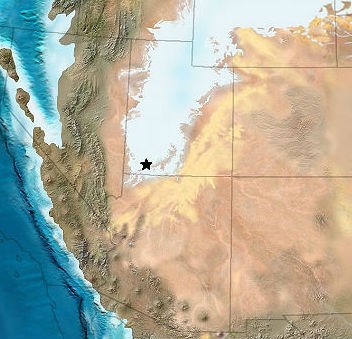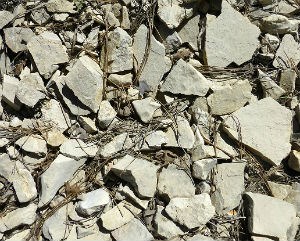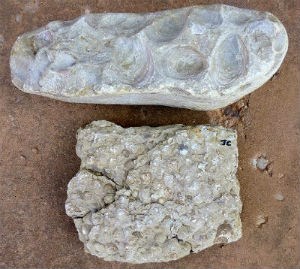
NPS photo/Adrienne Fitzgerald ~170-165 million years ago
The Carmel Formation consists of limestone containing marine fossils, along with mudstone, sandstone, and gypsum deposited in a shallow interior seaway.

Paleogeographic map courtesy of Ron Blakey, Colorado Plateau Geosystems, Inc. This map shows a depiction of Western North America during the deposition of the Temple Cap formation, ~170 million years ago. Zion is located at the star.

NPS photo/Adrienne Fitzgerald Only the lower portion of the Carmel Formation remains in Zion (the Co-op Creek member and small amounts of the overlying Crystal Creek member); the rest of the unit has eroded away in this area.

NPS photo Learn more about the ancient marine life of the Carmel Formation.
Return to the main Rock Layers page
|
Last updated: July 6, 2015
